This post was originally published on this site
Imagine the smell of freshly-baked croissants wafting through the air, or the satisfying swallow of wine made from grapes grown just down the road. Perhaps you muse about living on a sun-drenched Mediterranean beach or tucked down a cobbled lane savoring the cosmopolitan delights of a history-rich city…
A retirement in Europe is a dream for many folks. And it can easily be a reality. If it’s culture, history, and variety you’re after, Europe has it all, and at a cost much lower than you may think… Here we explore the five best low-cost options for enjoying your perfect European retirement.
Here you’ll find properties to rent for less than $600 a month or to buy for under $110,000. A filling three-course meal in a local restaurant can be had for $10, while a bag of fresh produce grown locally can be got for under $6.
In all these countries you’ll find fabulous beaches, idyllic rural retreats, and cities where history is thickly layered with stunning architecture and grand museums. Our experts have nominated an area they think is particularly worthy of your interest, but ultimately it’s up to you to decide what type of lifestyle you’re after.
Not surprisingly, Europe delivers strongly on healthcare; in each of our picks, you’ll find healthcare professionals and facilities of a world-class standard. But perhaps more surprisingly, the care on offer in these countries won’t leave you counting pennies. Many of these nations benefit from universal coverage and strong public healthcare systems, and even their private healthcare can be accessed for a sliver of the cost in the U.S. Doctors’ visits, for instance, can run well under $100, and other services are similarly reasonable.
You’re guaranteed to find an ideal place for yourself in Europe. Though a small continent, it packs in so much diversity that the perfect retirement for you is bound to be hiding somewhere. Read on to find it…
Italy
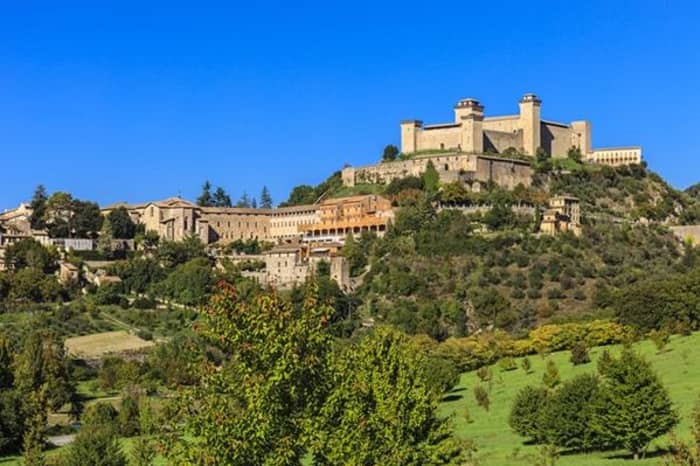
iStock/Flavio Vallenari
Whether it is golden light diffused on the undulating hills, crystal alpine lakes, or dramatic seacoast with towns improbably perched on the steep hills above the water, Italy’s scenery inspires a desire to stay and enjoy the dolce vita full-time. A relaxed pace with an emphasis on good food and human interaction, with excellent wines, cultural riches, and a lyrical language—there’s a lot to love about Italy.
The appealing lifestyle and gorgeous scenery draw many expats to the peninsula, and offers each their own tailor-made dream because Italy has it all, from art cities to ancient hill towns to modern suburbs, in any geographic preference you desire. The plentiful seacoasts appeal to beach lovers while the many mountains satisfy outdoorsy types and those who love to live all four seasons in their turn. The Mediterranean climate is fairly mild, but don’t expect endless summer here; there is a cooler winter, though just how cool depends on your desire. Want snow? The Alps. Want it milder? Sicily. And Italy offers everything in between.
Many people have the impression that it is expensive to live here. It’s understandable why; a cultural and historical powerhouse that draws millions of tourists each year seems like it would have a hefty cost of living. But tourist prices are one thing; living costs are another. You can easily find a place that will fit your budget; the key is to look outside the primary tourist destinations.
The appealing lifestyle and gorgeous scenery of Italy draw many expats to the peninsula and offers each their own tailor-made dream.
IL Italy Correspondent Valerie Fortney Schneider says, “Italy really offers so much and has something for everyone. It satisfies every geographic preference—from hills to mountains to seaside; and any urban preference, from welcoming small towns to medium cities with lots of life, to bigger city action.
“Best of all, Italy can fit any budget, too. There are habitable homes for sale in many places for less than the average cost of a new car. The beauty and laid-back lifestyle doesn’t have to be expensive here; in fact, our living expenses are lower in Italy than they were in the U.S.”
Expat Theresa Conti moved to Trieste, Italy, at age 64, solo.
“My vision was to live close to both the sea and mountains, in a walkable city that was safe, clean, and quiet with outdoor activities and an active life, and Trieste has it all. It’s a city with beautiful parks and beaches, good bus transportation, and a fantastic seafront promenade. I’m not saying it’s right for everyone, but it fits my needs and lifestyle. It’s peaceful and quiet, the way I like it, but has a lot to offer.
“My rent is $831 a month, all-inclusive. Try finding a roomy two-bedroom in Brooklyn for that!” she said.
Aside from housing costs, the living expenses in Italy are fairly consistent around the country. In the right spot, a couple can live well for as little as $1,830 per month.
Portugal
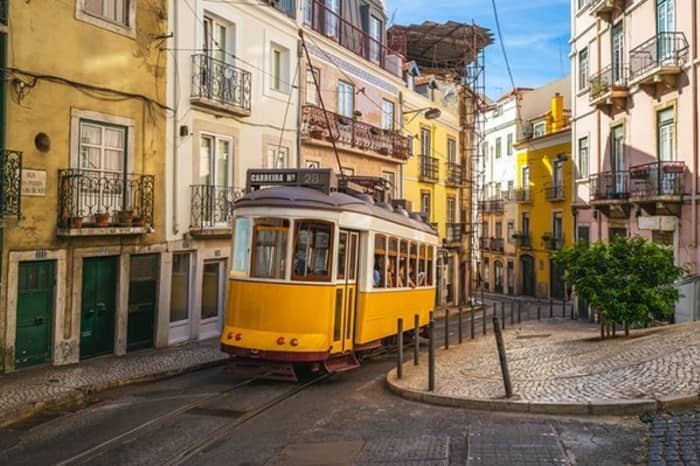
iStock/Jui-Chi Chan
Castles, cathedrals, and cobblestones. White stucco houses laced with bougainvillea, crowned with terracotta tiles. Grilled fish glistening with olive oil. Ruby red, award-winning wines. Calm, turquoise waters lapping golden sands in a secluded bay, and a coastline coaxing an 80-foot wave from an underwater cave.
This is Portugal.
Each year more visitors are coming to take a bite of the feast offered by this small Iberian country. For many years it has been a vacation destination for the British, French, Dutch, and others—even the Spanish—who came to love it so much, many became expats.
IL Portugal Correspondent Terry Coles and her husband moved abroad ten years ago, first settling in Panama. There they enjoyed life for five years before taking their first-ever trip to Europe and fell in love with it.
“Europe has so much history and culture and we wanted to be part of it. We sold all except what would fit into two small suitcases and traveled full-time for the next two years looking for our next home. Portugal captured our hearts and minds and we knew that we had found the perfect fit. And since Portugal is one of the easiest countries in Europe for North Americans to obtain residency it made perfect sense.”
Terry and her husband, Clyde, are one example of the many U.S. expats that visit Portugal and fall in love with the Portuguese people, the lifestyle, and the stunning vistas of golden sandy beaches.
“Every time I look out the window I smile,” said Diedre Miller. “I always dreamed of having a house with a sea view, but it was never affordable back in California.”
“We bought our house in Portugal sight unseen,” Diedre explained. “My husband, Bart, came to Portugal alone at first with a job offer that didn’t work out.” On his flight back to California, Diedre was online looking at property. She spotted the perfect house and made an offer that was accepted.
Both Diedre and Bart were able to walk away from the working world at age 51 and begin their new lives in Portugal. They found the perfect spot for a guest house in Old Town Albufeira, in the central Algarve region. They bought a six-bedroom, three-bathroom, furnished townhouse for $333,000. The spacious house has two kitchens, two terraces and sits just a few blocks from the beach. “We never thought we could have this much house for this little money,” Diedre said. The house is close to shops, restaurants and more importantly, the beach.
“Here I have a reason to smile,” she says. “Back in California all we did was work to pay the bills. There is no comparison to our lives here and there, it’s like night and day.”
Including rent, a couple can live comfortably in Portugal’s interior, or in small cities, from about $1,700 a month. A couple’s budget in Lisbon starts at about $2,100 or $2,200 a month. Singles should plan on a budget of about two-thirds that of a couple.
France
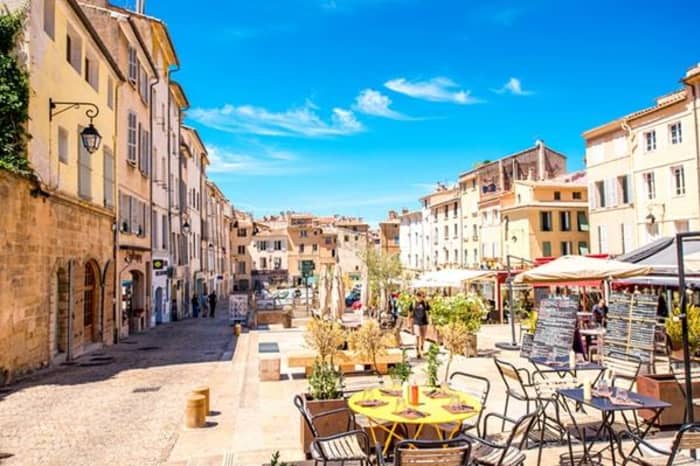
iStock/RossHelen
You didn’t expect France to be on this list, did you? Many people can never believe the land that gave the world the likes of Versailles, Chanel, and the term haute cuisine could be anything other than prohibitively expensive.
“Certainly, living in Cannes along the French Riviera won’t be the best budget option in France, but it’s incredibly surprising how much you can save if you stay away from the splashy resort areas and head to “authentic France”—sometimes referred to as France profonde, or “deep France,” says Tuula Rampont, IL France Correspondent.
“These are decentralized areas of the country with deeply rich French traditions and culture, and where real estate prices come in at, on average, 34% less than in the United States.”
“Areas like Brittany, Normandy, and the sunflower-filled region of the Dordogne provide excellent value-for-money. With homes, move-in-ready homes, available for purchase for $200,000 or less. Rents for a two-bedroom, furnished village house come in at around $700 a month.”
“Other pockets of the country with attractive prices include Alsace, the Loire Valley, and Montpellier —the fastest growing metropolitan area in France.”
“While some of the daily costs of living in France are comparable to those in North America (although electricity rates are among the lowest in Western Europe), retirees can expect to save considerably on certain foodstuffs like cheese, wine, and bread. By cutting out the middleman, and skirting import taxes, you’ll spend around $3-$4 on a fine slab of goat cheese or camembert, and $7.00 on a very enjoyable bottle of wine – table wines can be found for as little as $4.00. Picture yourself sipping French espressos ($1.50) and savoring flaky croissants ($1.20) in a lost-in-time village in southern France or an eclectic beach community in the Basque country. France has options for every retirement budget.”
A couple can enjoy all France has to offer for $2,200 per month including rent.
Spain
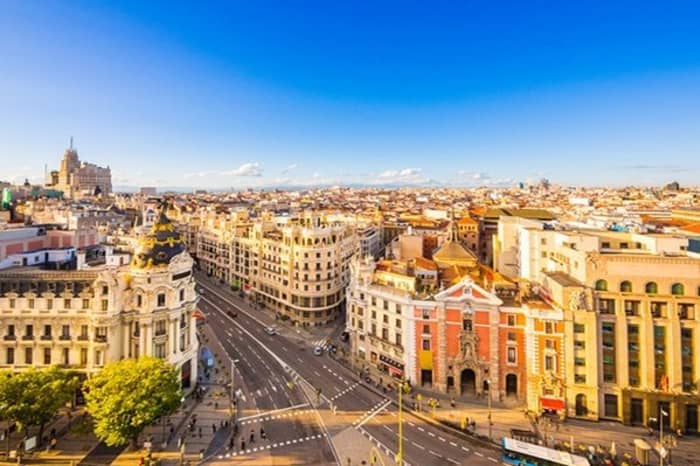
iStock/holgs
Warm, sunny days by the glittering Mediterranean, cool nights at an outdoor café, lingering over dinner until the wee hours, mouthwatering paella, mounds of fresh seafood, succulent roast lamb (and flavorful wines to accompany them), rich, ancient culture, hilltop castles, and vast stretches of countryside just made for hiking and cycling. Spain invites you to wax lyrical over its many charms and its laidback lifestyle. Here, having fun is expected and hanging out is an art.
And these days, that appealing lifestyle is very affordable. Spain has long been one of the least-expensive countries in Europe. Of course, the cost of living varies by location and lifestyle. Barcelona and Madrid are the most expensive cities. Prices are also high in San Sebastian, the north coast of Catalonia, and the Balearic Islands. Malaga, Alicante, and the Canary Islands are among the most affordable areas. Valencia, Granada, and Seville fall in the mid-range.
Food prices are reasonable. Spain’s warm climate means lots of locally-grown fruits and vegetables are available. Olive oil and wine are plentiful and inexpensive. Near the coasts, seafood is fresh and affordably priced. $100 a week would provide ample groceries for a healthy Mediterranean diet.
But, ultimately, Spain’s appeal is not its low cost. It’s the friendly, helpful, and life-loving people that are its most seductive asset. Although speaking Spanish makes life easier, most Spaniards speak some English and are delighted to practice. You can easily get by with only English, and since most expats in Spain are from the UK or Germany, North Americans have the advantage of being a bit exotic.
IL Spain Correspondent Marsha Scarbrough moved to Spain in 2017, at the age of 70. She had visited the country for the first time the year before and spent six weeks traveling around on her own. She had been searching for the perfect, affordable retirement destination for some time.
Marsha says, “My life in Spain has been more fun than I ever could have imagined. My social life is on fire. As a single woman, the friendliness, welcoming warmth, and helpfulness of the local people in Madrid made all the difference. The friends I have made here are an amazing blessing. ”
Madrid may be a bit more expensive than other places in Spain, but it still offers a lot of bang for the buck. Wine and beer are about $2.50 per glass. A generous gin and tonic will be about $8 to $10.50. Three-course menu del dia lunches run from $12 to $17 including wine or beer. In Chamberi, a hearty menu is $12 to $15. Most restaurants also offer a single plate at around $8. Prescriptions and medications are a fraction of U.S. prices.
“For me, the greatest savings come from not needing to own a car. As a senior resident, I have unlimited access to the efficient metro and bus system for $7.50 per month. If I splurge for a taxi, it’s usually around $13.”
The best place to retire in Spain depends on what you like and how you want to live. You may want to settle in an expat beach community on the Costa del Sol, or integrate into Spanish culture in a major city, or find bucolic isolation in the countryside.
A couple could live in a mid-sized city like Alicante for $2,650 per month. So if you’ve ever dreamed of living affordably in Europe—whether it’s for a few months at a time or for the rest of your life—take a look at Spain now.
Greece
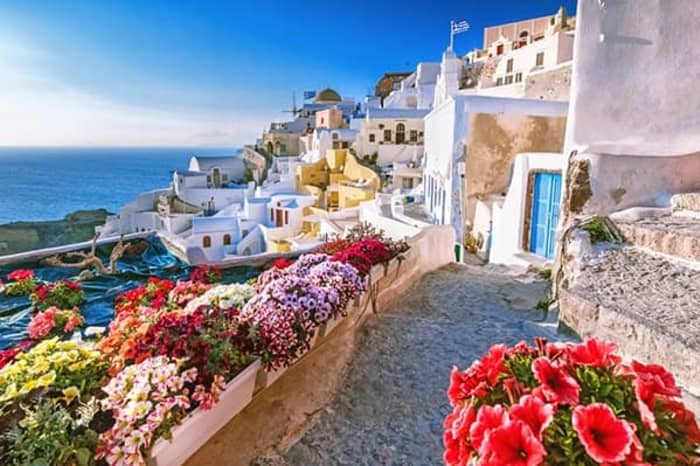
iStock/Ihor_Tailwind
Large, diverse, and visually stunning, Greece is an enthralling mixture of sun-drenched islands, towering mountains, buzzing cities, and timeless traditions. Wrapped in the warm embrace of the Aegean Sea, it’s vibrant, welcoming, and full of surprises.
“Greece is a great choice for expats because of its amazing weather, hospitable people, its relatively low cost of living, and its location, giving visitors easy access to travel to a wide range of other countries,” says IL contributor Lynn Roulo.
“I moved without a local job or a significant relationship waiting for me in Athens, so it was a big step into the unknown,” she says. “But it didn’t feel scary or anxiety-provoking. The idea of moving and starting a fresh new life energized me. That was in 2012, and I still feel a sense of excitement that I get to live here.
“The cost of housing in Athens is significantly less than what it is in the U.S. You can rent a comfortable, one-bedroom apartment in the city center for under $650 per month. A nice taverna meal for two with wine is under $30 and you can stock up on your fruits and vegetables at the open-air markets for about $30 for the week. Taxis charge a standard rate of $1.30 per mile so most of the time, you can get around town for under $10.”
A budget-conscious expat can live comfortably in Greece for $1,830 a month or less.
Bonus: Malta
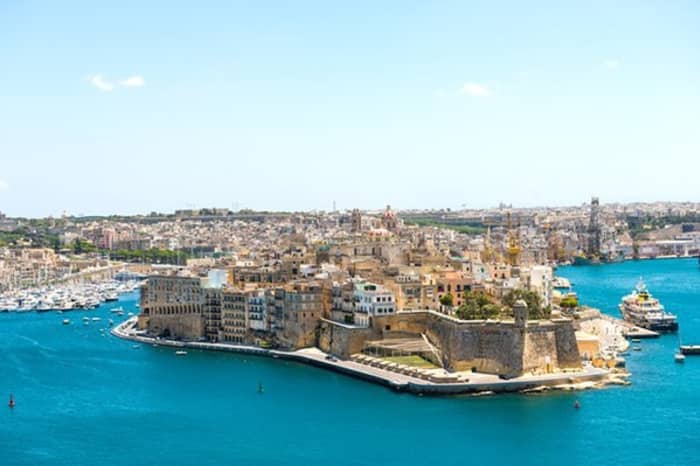
iStock/helovi
Ask any expat why they upped sticks to relocate to the tiny Mediterranean island nation of Malta (all 122 square miles of it—not a whole lot bigger than Nantucket) and the same three reasons keep cropping up: sea, sunshine, and the friendly and welcoming population of English-speaking locals.
In Malta, you’ll find abundant sunshine even at the height of winter. Valletta, the nation’s scenic capital and adorned with historic buildings, is renowned as the warmest capital in Europe—and with less than 7,000 inhabitants, a highly manageable one, at that. Even in January, you’ll still find temperatures in the 60s F, rising to the 80s F during the glorious summer months.
And even on islands as small as these, you’ll have no shortage of ways to enjoy this magnificent climate. Towns like Valletta and Sliema remain lively throughout the year and boast some of the best restaurants in the Mediterranean. And you don’t have to be a millionaire to enjoy everything Malta can provide.
Rent for a one-bedroom apartment—even those just a short walk to the seaside—averages around $750 to $800 per month. Groceries are inexpensive, with basic items such as bread costing around 35 cents. Dinner out for two at a nice mid-range restaurant, including a glass of wine, can cost about $50.
The country itself comprises a number of different islands, only three of which are actually inhabited. The second-largest of the three inhabited islands, Gozo is known for its quiet, idyllic, country lifestyle, which has already seen it become a favored destination among expat retirees in Malta.
“The reasons so many retired couples choose Gozo are multiple: everyone speaks English, prices for food and accommodation are reasonable, medical facilities are excellent, and the weather is superb all year round,” says IL contributor Kevin Flanagan.
“There is also easy access to Malta, just half an hour away on the ferry, if you want the bustle of a major European hub. But when I do visit the main island, I find that I always look forward to getting back to Gozo and the easy-going island vibe.”
Milk, bread, and other groceries can be got for $1 apiece, while a bottle of quality wine can be had for $6. Victoria, Gozo’s largest town, is the place to go for a bit of shopping. It’s also where you can sample some high culture in the town’s two opera houses or savor local organic produce in one of its excellent restaurants.
Malta has something for everyone— from ancient walled cities and breathtaking coastal trails to countryside farmhouses and delightful restaurants.
Cost of living will vary depending on where you want to live and your lifestyle, but a couple could live in a one-bedroom apartment in the small seaside village of Marsaxlokk for $2,331 per month.
Bonus: Croatia
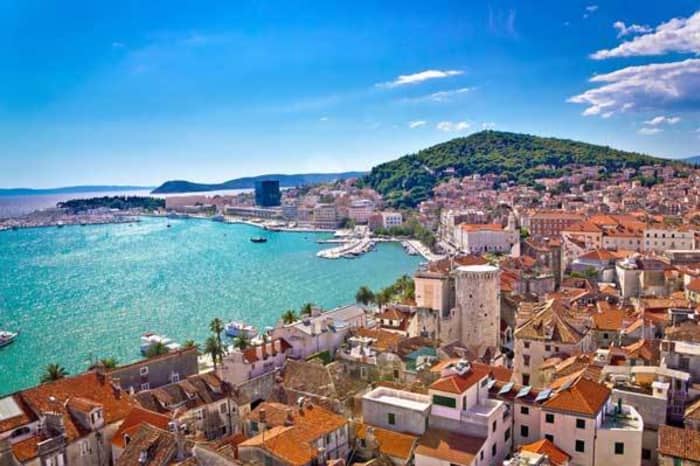
Image: iStock.com/xbrchx
The art of European living can be mastered in the Mediterranean country of Croatia. Sip coffee next to the ruins of an ancient Roman temple in the morning, swim in the royal blue waters of the Adriatic Sea in the afternoon, and explore the once gas-lit cobblestone streets of a hilltop town in the evening.
Every day in Croatia is to be savored. From nibbling on jade-colored olives and tasting ruby-red zinfandel, to inhaling the fresh sea air and laughing around an open fire, life on the western coast of the Balkan Peninsula is invigorating. And, it can be enjoyed part-time.
Croatia has long been a favorite destination for European vacationers. For decades they flocked to its beaches and walled towns when it was a part of the former country of Yugoslavia. In recent years, Croatia has become increasingly popular, thanks to many of its landscapes being featured in the HBO series Game of Thrones.
Split is Croatia’s second-largest city and home to the 1,700-year-old palace built by Roman Emperor Diocletian. Unlike ruins elsewhere in Europe, Diocletian’s Palace is still home to many locals—a legacy of the security the palace walls offered after the fall of the Roman Empire.
Split also boasts a sizeable university, a large hospital, and a thriving expat community. These characteristics have made the city increasingly popular with foreigners, meaning that rental costs have risen in recent years. For this reason, you might want to base yourself in a community just outside of Split, something that part-time expat Beth Hoke has done three times.
“I stayed in Podstrana once (just south of Split) and Okrug Gornji (just north of Split) twice. Split was easily accessible from both locations via public transportation, but the housing costs were a bit lower [outside of Split],” Beth says. “In Podstrana, I was right on the beach and in Okrug Gornji, I was within a 10- to 15-minute walk from the beach. I stayed in Okrug Gornji in late spring/early summer and Podstrana in late autumn/early winter. I paid the same for both two-bedroom apartments— between $475 and $500 per month.”
A couple can live well here for between $2,050 and $2,840 per month.

